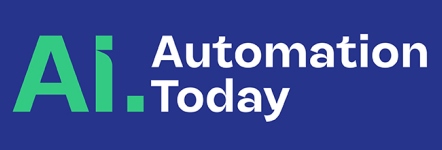Advancing Industrial and IoT Networks with Universal Single-Pair Ethernet Connectors
Introduction to Single-Pair Ethernet Standardization
The push for a standardized Single-Pair Ethernet (SPE) connector face is a pivotal development in industrial automation and IoT technologies. Spearheaded by esteemed organizations like the PROFIBUS User Organization (PNO), and championed by industry stalwarts Phoenix Contact and Weidmüller, this initiative aims to set a global standard that promises compatibility and sustainability in data transmission technologies used across myriad industrial sectors.
Single-Pair Ethernet, which operates by transmitting data at speeds ranging from 10Mbit/s to 1Gbit/s using only a pair of wires, has become increasingly essential in streamlined and powerful communication infrastructures in fields like manufacturing, process automation, and building management systems. The technological evolution towards standardization intends to address and simplify the complexity of diverse systems communicating efficiently.
Recognizing the essential nature of this development, major automation players are embracing this forward-thinking approach. By standardizing the connector face, the industry anticipates a reduction in engineering complexities, enhanced system reliability, and a boost in interoperability among devices from various manufacturers.
Standardizing Efforts and Industry Collaboration
The journey towards a universal SPE connector standard is underpinned by collaborative efforts aligning with international standards such as IEC 63171-6 and IEC 63171-7 ED2. These specifications are designed to ensure that the new connectors will fit seamlessly into existing and future technologies without the need for costly modifications or overhauls.
Through the concerted efforts of industry leaders like Phoenix Contact and Weidmüller, the standardization process has gained significant traction. Phoenix Contact, for instance, is pioneering the development of a universally accepted pin connector pattern for SPE, while Weidmüller is expanding its product range to incorporate these new standards, thus broadening the base for quicker adoption and integration across the industry.
This cooperative industry support not only accelerates the adoption of the SPE standards but also ensures that the transition towards a standardized connector interface is smooth and widely accepted. This proactive participation from leading manufacturers underscores the critical nature of the SPE standard in future-proofing industrial and IoT networks.
Benefits of SPE Connector Standardization
A universal connector face brings about numerous advantages, paramount among them being compatibility. This allows devices made by different manufacturers to be integrated effortlessly, vastly simplifying the system architectures in complex industrial environments. The clarity and security provided by adhering to international standards such as those set by ISO/IEC also enhance the reliability of these connectors.
Furthermore, investing in a technology that is designed to be future-proof means that the installed base can adapt to future innovations without necessitating extensive modifications. This not only safeguards investments but also aligns with sustainability goals by minimizing waste and resource consumption.
Lastly, the adoption of a standardized connector interface eliminates ambiguity and fosters a clearer understanding among manufacturers and users alike. This clarity is crucial for accelerating the adoption and implementation of SPE technologies in various applications, from factory floors to smart building operations.
Implementation and Looking Forward
With the ongoing rollout of the new SPE standards, companies like Weidmüller are already incorporating these innovations into their products. This integration showcases the immediate practical applications of the standardized connectors in enhancing the functionality and reliability of next-generation industrial and IoT networks.
As more organizations align with the ISO/IEC standardizations, the foundational work for robust, scalable, and interoperable network architectures solidifies. For businesses looking to adopt these technologies, consulting with experts in SPE implementation can provide significant strategic advantages, ensuring that the transition is both smooth and aligned with long-term operational goals.
The future looks bright for Single-Pair Ethernet in industrial and IoT applications. As the technology advances and adoption grows, businesses are encouraged to stay informed and engage with industry leaders to fully leverage the benefits of SPE. The universal standards set today will pave the way for the smart automation solutions of tomorrow.





